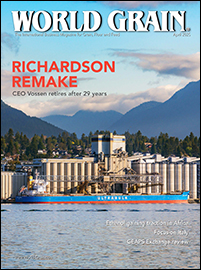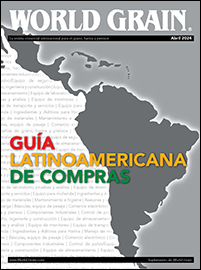WASHINGTON, D.C., U.S. — More than 20 years after its implementation, the North American Free Trade Agreement (NAFTA) has helped boost agricultural trade between Canada, Mexico and the U.S., the U.S. Grains Council (USGC) said.
With Mexico, trade has broadened to the point that the country is now the second largest market for U.S. corn, a consistent market for U.S. sorghum, the top market for U.S. barley and the second largest market for U.S. distiller's dried grains with solubles (DDGS).
The NAFTA trade agreement has had this impact on U.S. agriculture by phasing out tariffs on feed grains, which allowed for growth in demand driven by a steady expansion in livestock and poultry production in Mexico.
USGC was an important player in providing education and information to policymakers who made the decision to approve NAFTA more than two decades ago, the council said.
“It was very important for Mexico to get NAFTA passed as it allowed for our livestock and poultry industries to be competitive,” said Julio Hernandez, USGC director in Mexico. “NAFTA allows Mexican end-users to import high-quality grains to feed their livestock, and the Council in turn provides them with information so they can make smart decisions about buying grain.”
Hernandez also noted that NAFTA brought with it the use of better technology.
“With the ratification of NAFTA, the agreement created opportunities for modern technology to come to Mexico that improved the feeding of livestock and poultry,” Hernandez said.
Alan Tiemann, USGC chairman and a corn farmer from Seward, Nebraska, U.S., traveled to Mexico with a past USGC mission and observed how the trade agreement has changed Mexico’s livestock industry.
“Over the course of my farming career, I have witnessed the evolution of NAFTA and how it has benefited U.S. agriculture,” Tiemann said. “After NAFTA went into effect, the United States was able to go in with all of the corn Mexico needed, which was especially beneficial to the Mexican livestock producers wanting corn and DDGS.”
Mexico has been a consistent market for U.S. sorghum for many years. Bill Kubecka, a member of USGC's board of directors and a sorghum farmer from Palacios, Texas, U.S., has also seen the Mexican market first-hand while traveling on a trade mission with the Council.
“Creating business with our end-users in Mexico is all about relationships,” Kubecka said. He also said that while China has been a big competitor for U.S. sorghum, he believes NAFTA’s role and the Council’s work to connect U.S. producers and Mexican buyers has kept the United States competitive in Mexico.
“I have traveled around the world on different trade missions and everywhere I go, the end-users want to meet the farmers,” Kubecka said. “There are always questions and misrepresentations that we can answer and be a resource.”
Buzz Mattelin, Montana Wheat and Barley Committee board member and barley farmer from Culbertson, Montana, U.S., traveled on the council’s Grain Export Mission (GEM) to Mexico last December and to a craft brewing conference in Mexico in September of this year.
“It’s easy to export to Mexican brewers because they are one of our best customers,” Mattelin said. “On our mission in September for a craft brewing conference, we were also discussing using barley with people from Central America as it is a growing industry in those countries. Building those relationships is so important.”
Mattelin shared a success story of a reverse trade mission in which USGC brought craft brewers to his farm in Montana. One Mexican brewer liked what he saw and decided to exclusively supply barley from Montana for his craft brewing business.
“NAFTA allows for free movement back and forth, and the trade agreement makes it advantageous for us to work with Mexico as one of our best customers,” Mattelin said.
While there have been growing pains and challenges for NAFTA over the past two decades, the progressive impact the trade agreement has had on U.S. agriculture – and specifically feed grains – has been apparent. USGC continues its efforts to build relationships through trade missions and create unique opportunities for growth and closer cooperation between U.S. agricultural producers and their customers in Mexico.
Tiemann, Kubecka and Mattelin all agreed that trade missions organized by USGC have played an immense role in developing these crucial connections with our NAFTA trading partners, USGC said.
“It’s good to know your customer and for them to know us,” said Tiemann. “The council allows for this opportunity to continue building trust.”





